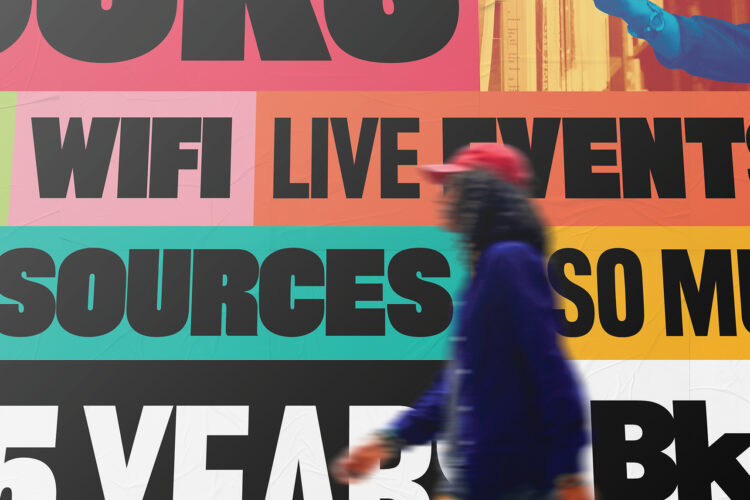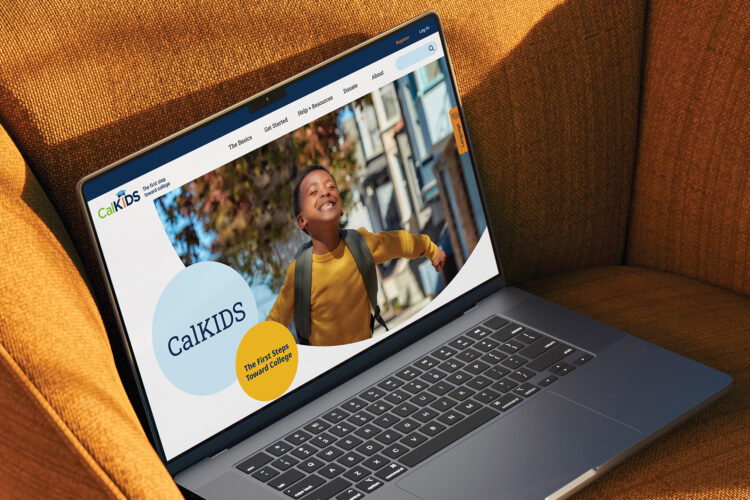RFPs don’t often get talked about, but the humble RFP is where all government (and most nonprofit) projects start. Here is a template to get started and tips on how to make the RFP process more equitable and streamlined. This post is expanded from a talk at Rosenfeld’s inaugural Civic Design Conference called “RFPs Without Tears: Writing Inclusive RFPs that Don’t Scare Away Talent.” You can also view our RFP Template Google Doc.
A strange confession: Bellweather is an expert on Request For Proposals—or RFPs.
Being an RFP expert was certainly not a skill that our team sought out. The expert-ness was earned over the past six years founding and running Bellweather Agency. When Bellweather started in 2016, we knew we wanted to work closely with government agencies, DMOs (Destination Marketing Organizations), and non-profits. These clients have one major thing in common: all their projects start with a Request For Proposals (RFP). We did some math: Bellweather has read/received 285 RFPs, and submitted 72 proposals. Some of those RFPs were dreadful—100+ pages! spec work!—and some were as thoughtful as the people who wrote them. Here’s what we’ve learned since 2016:
What is an RFP?
A Request For Proposals (RFP) is a document describing a project that needs an outside business to complete.
RFPs are written by the hiring agency and sent to outside consultants/businesses—which could include creative agencies, media buying agencies, development agencies, or consultant firms. Any outside provider who wants to “bid” on the project submits a Proposal.
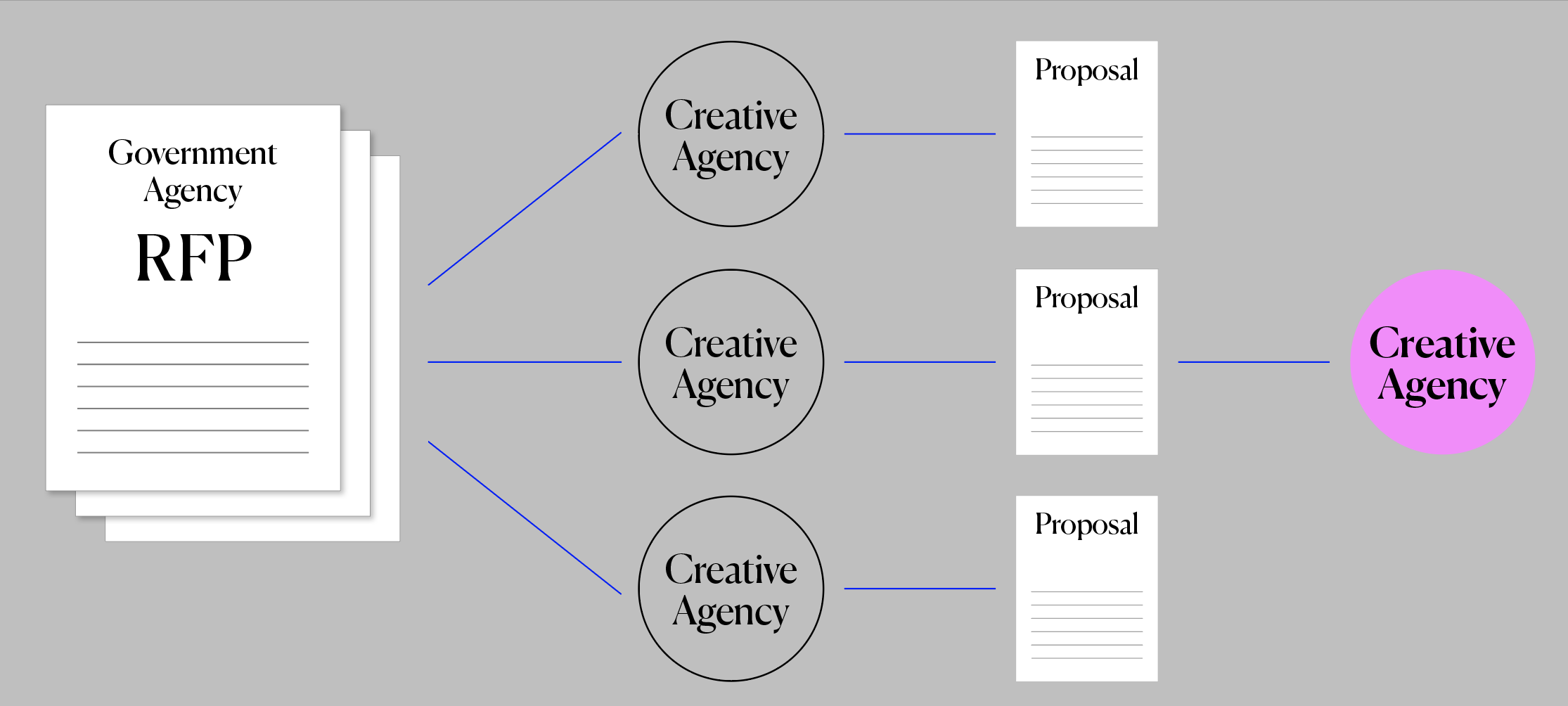
Who uses RFPs?
All government agencies in the United States and many international government agencies use RFPs to buy goods and services. RFPs are used by government agencies to buy everything, from toilet paper to websites. Most government agencies are required by law to post RFPs publicly on Procurement Portals. Anyone can bid, as long as you know where to look and are not scared by paperwork.
How do I find RFPs?
All states and government agencies are required to post RFPs on their agency’s website, or have separate “Procurement Portal” websites to house them all. Most procurement sites are complicated, hard to navigate, and may require signing up to view RFPs. Examples include:

- Long list + hard to navigate + requires knowing government codes: Chicago’s Solicitations
- Complicated + requires sign-up + not-mobile friendly: New York State’s “Contract Reporter”
There are also RFP database websites that send email round-ups of government RFP opportunities (for a fee): [FindRFP] Many other sectors use RFPs: travel and tourism, non-profits, and even some for-profit companies. For these private-based clients, most RFPs are “closed” or invite-only. You will only receive the RFP if the hiring agency reaches out and shares it with you directly.
Why is improving RFPs important?
It’s important to focus on RFPs because it’s the very beginning of the work. The final product will only be as good as the potential talent who applies for the job. So many RFPs scare off talent—the amount of reading, the amount of paperwork required, or the sheer complexity of the wording can scare off firms, especially small ones. It’s also important to reflect on the RFP process to make it more equitable and efficient.

Many RFPs contribute to inequitable outcomes
Inherent in the RFP process is this inequitable truth: hiring agencies are asking potential agencies to do work for free. The time required to find the RFP (if not sent directly), read the RFP, put together a proposal weaving together all the requirements needed—all this is unpaid work. If you are a small firm, paying your team a living wage with equitable fiscal policies (paid family leave! childcare leave! transportation stipends!), doing free work is a luxury that can quickly impact the thin margins (and schedule juggling) you’re already coping with. Bigger agencies—agencies doing work for big, often corporate clients—have a leg-up responding to RFPs. Bigger, established agencies have the operational cushion to do the “free work” of compiling a proposal. Putting together technically complex proposal requirements—notarized documents, resumes, specific case studies and KPIs, estimated billings, complex billing rate charts—every added complication in an RFP knocks out another small firm who simply can’t afford to do free work. This funding gap is especially true for minority-owned businesses.
How to write a great RFP:
All these recommendations are equity-driven + operationally beneficial. Put another way: everything here is going to encourage more partners to submit proposals and for the process to be more streamlined for the government agency team.
1. Establish partnership with Procurement
If you work at a government agency, there is either a Procurement department or Procurement Officer within your agency. This person/people/department is here to help ensure the paperwork and process for obtaining bids (a) adheres to the multitude of laws the agency must adhere to, and (b) follows the agency-wide process for working with outside partners. MAKE FRIENDS WITH PROCUREMENT. There is no way you are going to find a great partner without procurement on your side. A pre-meeting with procurement is crucial—you need to establish trust before you start writing the RFP. Meet face-to-face to hear processes and rules from the start. Come to the meeting with an open mind—you’re here to build trust, not change policy.
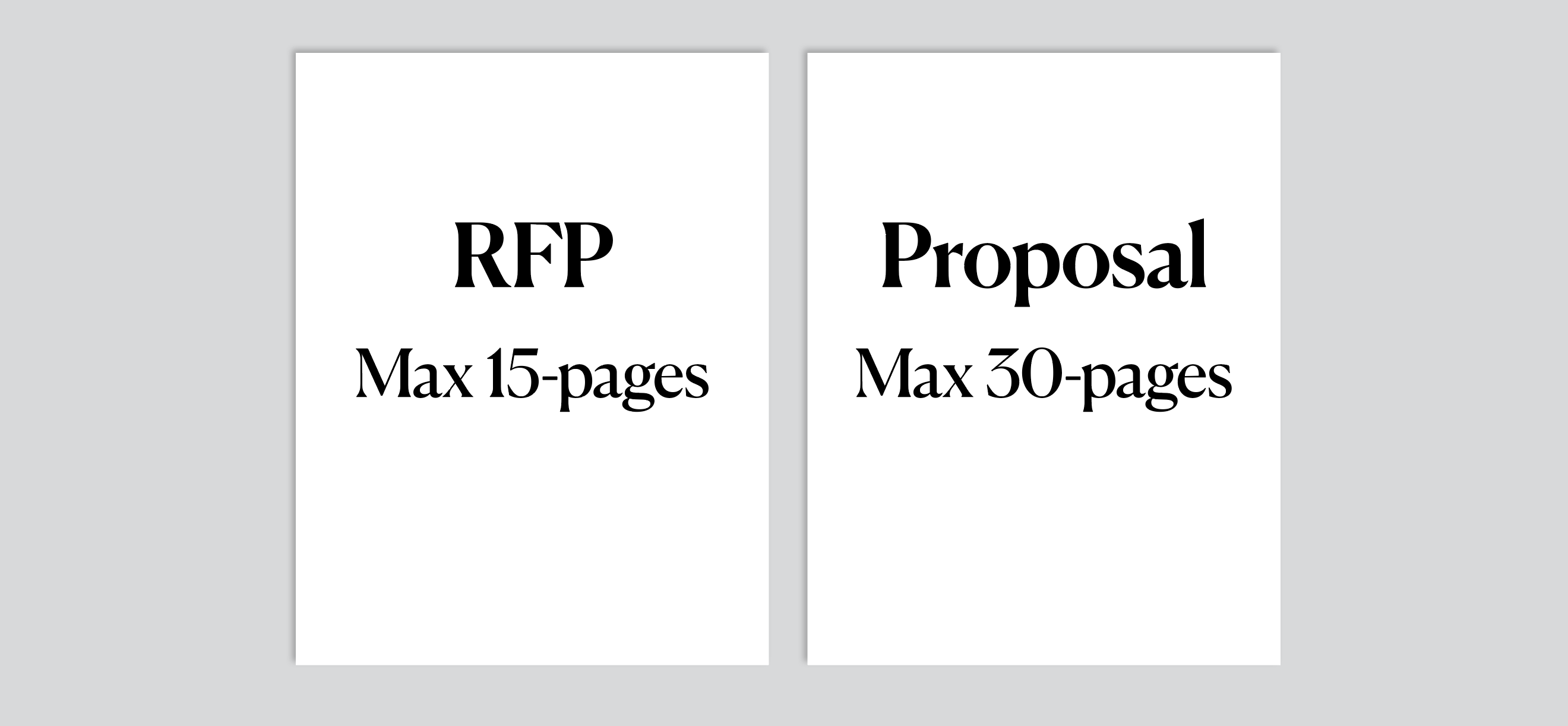
2. Establish page count limits: 15-pages max for the RFP; 30-pages max for the Proposal
No one wants to read lengthy RFPs. And no evaluation team on the hiring side wants to review multiple 50+ page proposals. The answer: page limits for both the RFP and proposals. Page limits help streamline the process and make it efficient for both sides. Page limits ensure the hiring team is focused in their ask, and that proposals are focused on the important things. Furthermore, page limits ensure that bigger firms don’t overtake smaller ones with blustery, longwinded responses.

3. Make your first page help submissions
The first page = a submission tool. Put all the key deadlines, contact information, and submission guidelines into a table on the first page. This page will be read close to the deadline: make it easy for someone to submit and get their proposal over to the correct place. >> Our RFP template has this table ready for you! Download it here: [RFP Template – Google Doc) <<
4. Market your RFP to preferred agencies—but follow the rules!
Ask procurement if they can send RFP directly to agencies (rules can be stringent!) Ask if you can post the RFP on social, send to industry boards, etc. And finally review user experience (UX) for the RFP site: procurement portals can be scary!
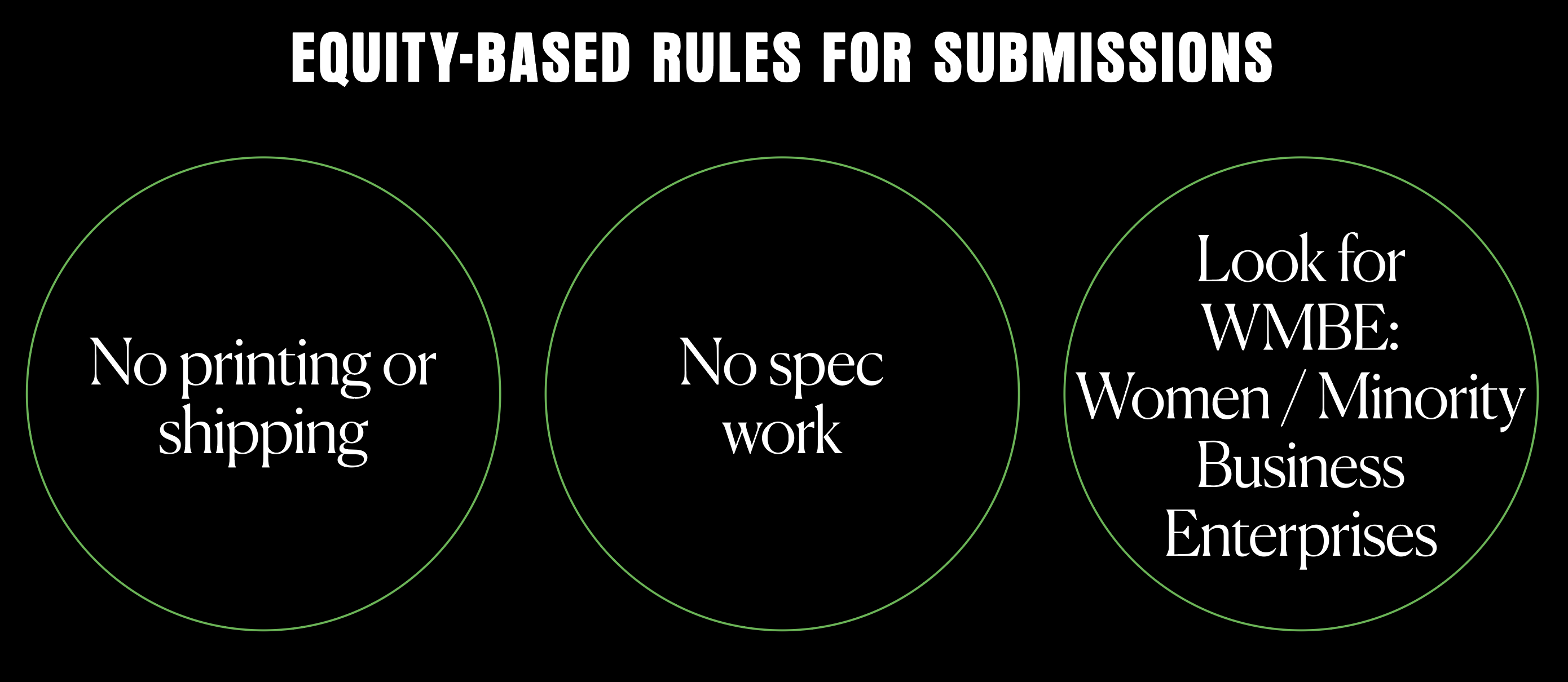
5. No printing or shipping
No printing or shipping helps make RFPs more equitable (and more sustainable.) So many RFPs we’ve seen ask for multiple bound copies with accompanying USB drives. The cost to print, ship, bind can be incredibly prohibitive, quickly adding up to $200+ in costs (not to mention the time and energy required to do the production.) Small firms sometimes don’t have the funds to pay for this type of production tap dance. So don’t do it. Ask for a PDF, sent via email.
6. NO SPEC WORK
There are many words to describe “spec” work—”work sample,” “homework assignment,” “pitch deck” are other phrases used—but the gist of spec work is any work done for free. Spec work can include asking for preliminary logo ideas, concepts for product strategy, or even asking for a first-draft of the project. If you were building a house, would you ask multiple architects to create custom plans for free, and then you’d decide which one you liked best? When looking for a stylist, do you ask for the first haircut free to see if you like it? When asking a designer for your wedding clothes, do you ask to see custom sketches before you pay them? No. Respect the businesses and the people you want to work with. No spec work. (As an aside…Bellweather will not submit spec work. Full stop. We see it as a red flag when a potential partner asks for it.)
7. Look for WMBE — Women / Minority Business Enterprises
We’ve gone into detail in another post on what WMBE’s are, and why they are important. Read that post! And then hire all the WMBEs you can. Finally…download our RFP template.
We’ve put all these recommendations into a single Request For Proposals Template (Google Doc)
Get the RFP Template here: [link to RFP Template 2022] Great projects start with an RFP that gets great proposals. Let’s make the process more equitable and more streamlined, ensuring projects start from a foundation of collaboration and respect.
